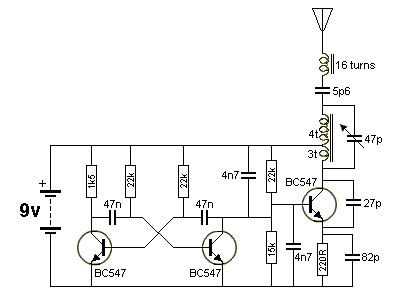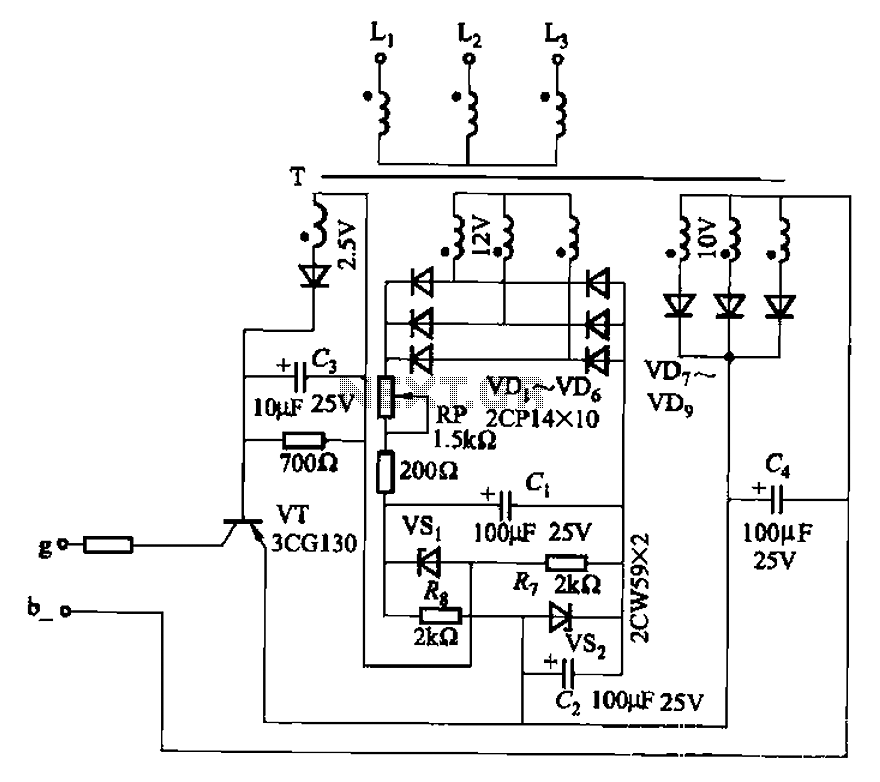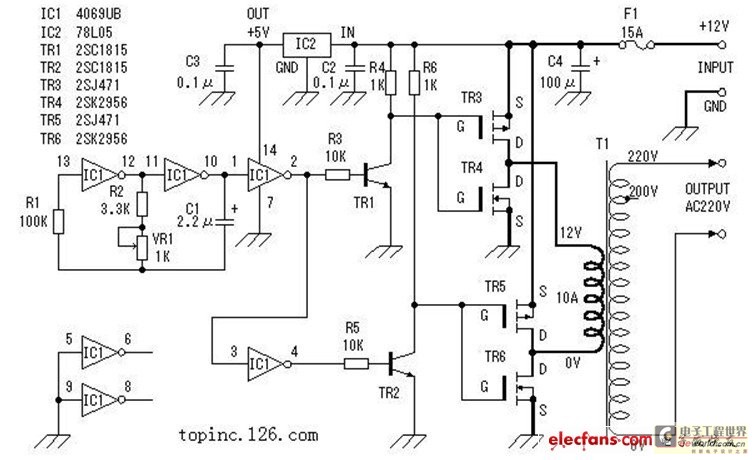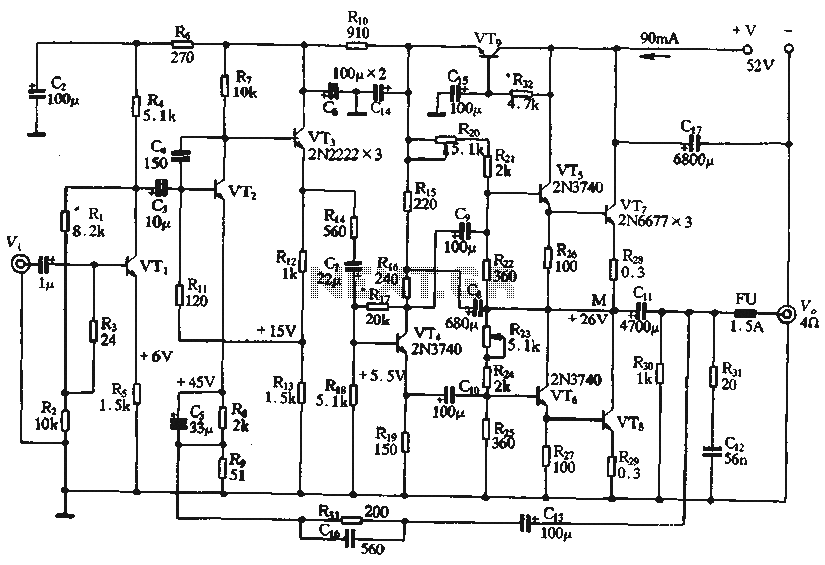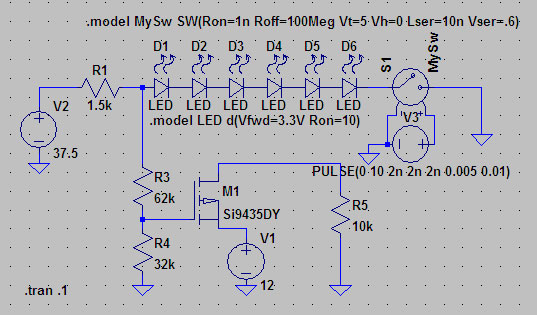
Laser Power Supply Circuit
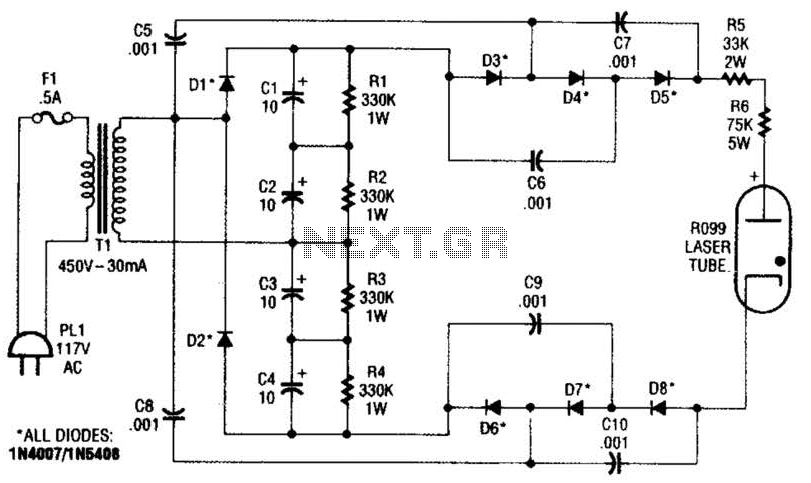
This supply generates an initial high voltage for ignition purposes. After ignition, the supply generates about 1300 to 1500 V. If a higher ignition voltage (than the 6000 V supplied) is necessary, more multiplier stages can be added to D5 and D8.
The described power supply system is designed to provide an initial high voltage for ignition applications, typically utilized in igniting gas burners or similar devices. Upon successful ignition, the output voltage stabilizes within the range of 1300 to 1500 volts, which is sufficient for maintaining the ignition process.
For scenarios requiring a higher ignition voltage exceeding the standard output of 6000 volts, the design allows for the addition of extra multiplier stages. These stages can be integrated into the circuit at points D5 and D8, which are likely configured as voltage doubler or tripler circuits, enhancing the overall voltage output through capacitive and inductive coupling techniques.
The operation of this power supply begins with a primary voltage input, which is transformed by a step-up transformer or a similar circuit element. The initial high voltage is generated through a combination of switching elements and capacitive storage, allowing for rapid discharge and ignition.
The inclusion of multiplier stages at designated points in the circuit (D5 and D8) enables flexibility in voltage output, accommodating various ignition requirements. Each multiplier stage effectively increases the voltage by a factor determined by its configuration, thereby allowing the system to achieve the necessary ignition voltage without compromising safety or operational integrity.
In summary, this power supply system is a versatile solution for high-voltage ignition applications, featuring a robust design that can be easily modified to meet specific voltage requirements through the addition of multiplier stages. The careful consideration of component selection and circuit topology ensures reliable performance and adaptability in diverse operational environments. This supply generates an initial high voltage for ignition purposes. After ignition, the supply generates about 1300 to 1500 V. If a higher ignition voltage (than the 6000 V supplied) is necessary, more multiplier stages can be added to D5 and D8.
The described power supply system is designed to provide an initial high voltage for ignition applications, typically utilized in igniting gas burners or similar devices. Upon successful ignition, the output voltage stabilizes within the range of 1300 to 1500 volts, which is sufficient for maintaining the ignition process.
For scenarios requiring a higher ignition voltage exceeding the standard output of 6000 volts, the design allows for the addition of extra multiplier stages. These stages can be integrated into the circuit at points D5 and D8, which are likely configured as voltage doubler or tripler circuits, enhancing the overall voltage output through capacitive and inductive coupling techniques.
The operation of this power supply begins with a primary voltage input, which is transformed by a step-up transformer or a similar circuit element. The initial high voltage is generated through a combination of switching elements and capacitive storage, allowing for rapid discharge and ignition.
The inclusion of multiplier stages at designated points in the circuit (D5 and D8) enables flexibility in voltage output, accommodating various ignition requirements. Each multiplier stage effectively increases the voltage by a factor determined by its configuration, thereby allowing the system to achieve the necessary ignition voltage without compromising safety or operational integrity.
In summary, this power supply system is a versatile solution for high-voltage ignition applications, featuring a robust design that can be easily modified to meet specific voltage requirements through the addition of multiplier stages. The careful consideration of component selection and circuit topology ensures reliable performance and adaptability in diverse operational environments. This supply generates an initial high voltage for ignition purposes. After ignition, the supply generates about 1300 to 1500 V. If a higher ignition voltage (than the 6000 V supplied) is necessary, more multiplier stages can be added to D5 and D8.

